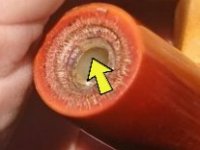Coloring Progress Over Time/No of Bowls in one Meerschaum Pipe
- Thread starter cshubhra
- Start date
You are using an out of date browser. It may not display this or other websites correctly.
You should upgrade or use an alternative browser.
You should upgrade or use an alternative browser.
SmokingPipes.com Updates
Watch for Updates Twice a Week
And so into the 9th page we're pretty much back where we started.
???????And so into the 9th page we're pretty much back where we started.
There was a time when there would have been a keelhaulin' before page 3. I just don't know what things are coming to these days.
I've got nothing left to say really. Besides, I've almost used my quarterly allotment of words allowed for commenting and if I go over I can only comment with single words and certain emojis. I still want to post on the WAYS thread from time to time, so I'll save what I have left for that.
I hear there's surgery that can fix that.I just wanna know if I got a leaky pipe.....
Don't challenge @chasingembers lightly, because he will go to extreme lengths to help us understand.So what have we learned from all this carnage?
I've got a theory on the shank coloring. That that is where moisture collects, and the temperature differential and condensation and capilary action has to do with the "condensation" of tars that move through the material. Hence the shank coloring first. I assume the coloring-attachment gets the bowl in the position to absorb the tars rather than starting at the shank.i see a lot of these Meerschaum coloring bowls do, how are they suppose to work?
I'm still wondering if perhaps filling a freshly smoked bowl with water and letting it sit, accelerates the process.
Please don't take this as another challenge to cut one up
Don't challenge @chasingembers lightly, because he will go to extreme lengths to help us understand.

The problem with that in my dissection experiment was no staining between the airway and the exterior of the pipe. The meerschaum wasn't colored, only the wax.I've got a theory on the shank coloring. That that is where moisture collects, and the temperature differential and condensation and capilary action has to do with the "condensation" of tars that move through the material. Hence the shank coloring first. I assume the coloring-attachment gets the bowl in the position to absorb the tars rather than starting at the shank.
@mortonbriar left his meer in his work truck in the sun and the side facing up “lost” all the colouring it had accumulated. Would that be due to light, or heat, both, or something else?
Probably sun fading.@mortonbriar left his meer in his work truck in the sun and the side facing up “lost” all the colouring it had accumulated. Would that be due to light, or heat, both, or something else?
Noooo stop it this has been covered in SEVERAL posts, christ is there a way to block or hide entire threads? ?I've got a theory on the shank coloring. That that is where moisture collects, and the temperature differential and condensation and capilary action has to do with the "condensation" of tars that move through the material. Hence the shank coloring first. I assume the coloring-attachment gets the bowl in the position to absorb the tars rather than starting at the shank.
Thank you for the sacrifice in the name of science. So very interesting to study it from these cross sections.
Yep....And we got an expert here who can perform it...I hear there's surgery that can fix that.
Why fill it with water and not whiskey?The other day I performed the test and filled the new tobacco in a bowl after smoking one when bowl was still warm and put 1.5 teaspoons of Tennessee whiskey single barrel on my tobacco and left overnight...The only results i could see was that my Plum puding special reserve changed to Burbon barrel aged overnight and tasted great the next day...no coloring change...tobacco sucked all the whiskey in it...maybe if you submerge bacco completely to the top of the bowl every day for a month you may see some coloring results...it shoud leak into the meerschaum and when warmed up it would glue itself inDon't challenge @chasingembers lightly, because he will go to extreme lengths to help us understand.
I've got a theory on the shank coloring. That that is where moisture collects, and the temperature differential and condensation and capilary action has to do with the "condensation" of tars that move through the material. Hence the shank coloring first. I assume the coloring-attachment gets the bowl in the position to absorb the tars rather than starting at the shank.
I'm still wondering if perhaps filling a freshly smoked bowl with water and letting it sit, accelerates the process.
Please don't take this as another challenge to cut one up
So the shank colors faster due to the smoke cooling. But wouldn't you think that heat would open up the pores to absorb more?
The more I learn the less I know....
The more I learn the less I know....





